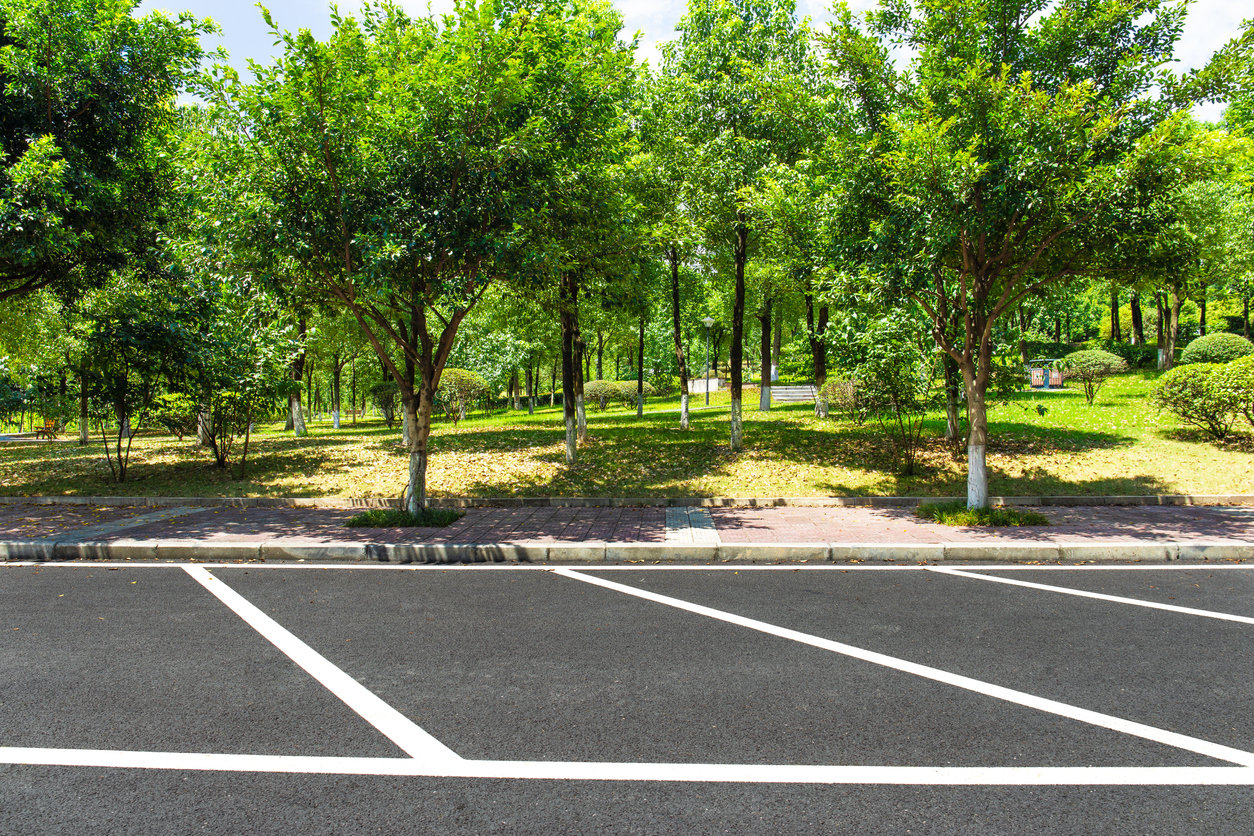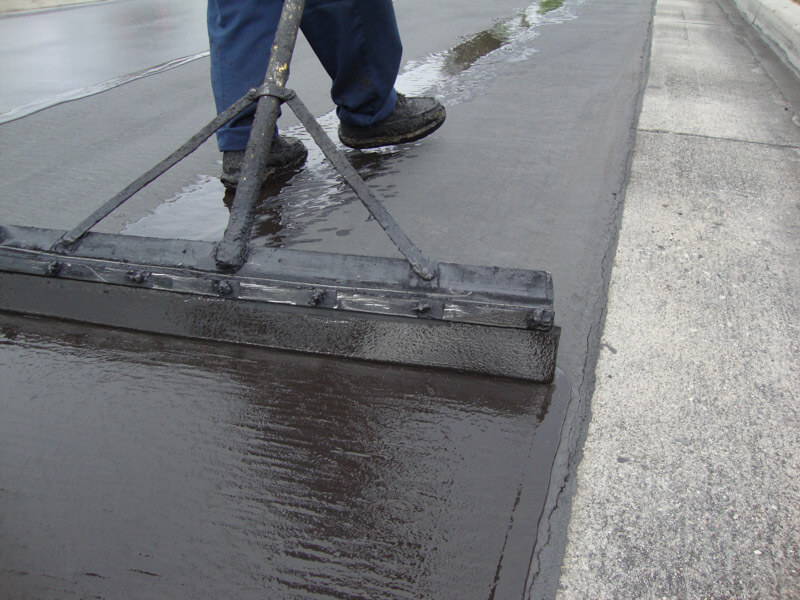What is the Proper Routine for Maintaining an Asphalt Parking Lot?
Posted on August 08, 2019 by Rafael Cantillo
Most people think of asphalt as lasting forever without maintenance. However, as a business owner, you know better. Maintaining a parking lot is surprisingly involved work requiring a portion of your time, attention, and maintenance budget every year. While well-sealed asphalt is nearly indestructible in the short-term, no doubt you've driven through a few poorly maintained parking lots that reveal just how important asphalt maintenance really is.
Fortunately, business owners who understand the proper routine for maintaining an asphalt parking lot can ensure a smooth, beautiful parking experience for customers while hardly lifting a finger annually. The key is to know what to schedule, when to schedule it, and let your asphalt repair team do the rest.
Asphalt Maintenance is an Alternating Yearly Cycle
Unlike your HVAC or roof, maintaining your parking lot is not the same every year. A good maintenance schedule for asphalt involves choosing one of three potential asphalt services each year. This is because asphalt services generally need to be conducted every 3-5 years and a rotating cycle is the most cost-efficient and time-efficient for business owners.
The ideal asphalt maintenance schedule is a 3-year alternating cycle that includes resealing, crack sealing, and asphalt repairs in sequence. The cycle starts with your original sealcoat, which establishes the first year of maintenance. We'll explain more about sealcoat timing further on in the article. The next year, schedule crack repairs if you have developed any cracks. The year after that, take care of asphalt repairs. It may help to see it visually charted:
Ideal Parking Lot Maintenance Schedule:
- First Year: Sealcoat
- Second Year: Crack Sealing
- Third Year: Asphalt Repairs
From there, repeat the process by re-applying a new layer of sealcoat on year four, crack sealing on year five, and so on. This schedule is ideal because sealcoat needs to be re-applied about every three years. The schedule also ensures that any parking lot cracks, dips, or damage are repaired within three years of occurring, which can prevent extensive additive damage over time.
The Right Time of Year for Asphalt Maintenance
The alternating annual schedule is highly convenient for business owners, but it's also important to schedule your annual repairs for the right time of year. That matters more for regions that experience extreme summers or winters, and less for businesses in temperate climates without extreme temperatures.
Asphalt is best applied, repaired, and sealed in good weather with moderate temperatures. Asphalt should almost never be worked in the winter, and your sealcoat needs to be ready by the time snows begin to fall. For most regions, summer is the ideal time to take care of parking lot maintenance. However, if your region experiences blistering summers, your team may suggest spring or fall, as the asphalt will be easier to work with in the moderate climate.
Applying Sealcoat to Your Asphalt
Asphalt is gravel and rubber medium held together with a binder solution. Alone, it's springy and sturdy, but not the indestructible surface we're accustomed to. Sealcoat is what gives asphalt that unbeatable resistance to sun, moisture, impacts, and constantly parking vehicles. Like any other kind of sealant, this is a liquid that is applied and provides protection for a set amount of time. High-end sealcoats provide 3-5 years of protection while low-end sealcoats may only last for 6 months.
For business-grade sealcoat, three years is a safe schedule for reapplication that will ensure you are not over-applying while also not allowing your sealcoat to wear away.

When to Apply Your First Sealcoat
The first layer of sealcoat, however, is a slightly different story. When asphalt is first laid, the oil in the binders will need to cure (evaporate in the sun) for several months before it is ready to be sealed. Otherwise, the rising oil will prevent the sealcoat from taking hold and your sealant will flake away within the year.
Depending on the size of your asphalt project, you will need to wait between 1 month to 1 year before applying sealcoat. For most parking lot-sized projects, 6 months is the minimum amount of time to wait before applying a sealcoat.
Asphalt crack sealing
Asphalt cracks happen for a number of reasons, from seeping moisture to uneven base layers, to the ground slowly shifting underneath your parking lot. A common cause is broken pavement or an old parking lot below the current layer of asphalt. Another is old sealant allowing moisture to enter and expand the asphalt.
The one consistency is that asphalt cracks start to form in every parking lot every year. Small at first, asphalt cracks create more cracks as the asphalt's own integrous tension pulls the two halves away from each other.
Filling the cracks with a special asphalt formula designed as crack sealing is the best way to prevent these cracks from growing into lot-wide problem. A filled crack cannot take in moisture which expands to widen the crack. It cannot pull more of the lot apart, and it cannot become the source of a pothole. An unfilled crack can do all those things.
This is why it's important take care of your asphalt crack sealing once every three years, or more often if your lot is prone to cracks for underlying reasons. If your lot is not prone to cracks, a three-year cycle ensures that any small cracks that form are not allowed to grow into problems.
Asphalt Repairs
Finally, asphalt repairs are those that require a new surface of asphalt to clear up any potholes or irregularities. Asphalt repair in the form of patching or repaving is the sister-service to crack-filling and focuses more on the surface of your parking lot than applying a filler down through the base materials.
When your parking lot develops rough spots, potholes, or extensive crumbling cracks, asphalt repairs are the right answer. In these situations, your maintenance team will arrive, clean the area, and apply a new layer of fresh asphalt in the affected area. By scheduling routine asphalt repairs ever three years, you ensure that your parking lot is never allowed to deteriorate if it develops any of these problems.
Regular asphalt repairs will fill potholes before they become more than a little bump, and will re-surface crumbling areas before they can negatively affect your entire lot or become a hazard for customers. It can also keep your parking lot enjoyably smooth even as the original installation ages over time.
Adopting the Proper Routine for Parking Lot Repair
The best news is that it's easy to get on-schedule. Unlike other types of maintenance, it's never too late to start up an annual asphalt repair routine. You can even decide which phase to start on based on what your parking lot needs most. If you resealed recently, start with crack filler. If there are no noticeable cracks, start with asphalt repairs.
Of course, if you're not sure where to start (true of many business owners), then the easiest answer is to ask an asphalt expert! Call for an inspection of your parking lot and get a detailed assessment of which of your three rotating options to start with first. Then, next year, begin the routine maintenance cycle. For more insights or for an inspection of your venue parking lot, contact us today at 714-633-0300! Our team of experts is ready to provide the asphalt maintenance your business needs.




Comments